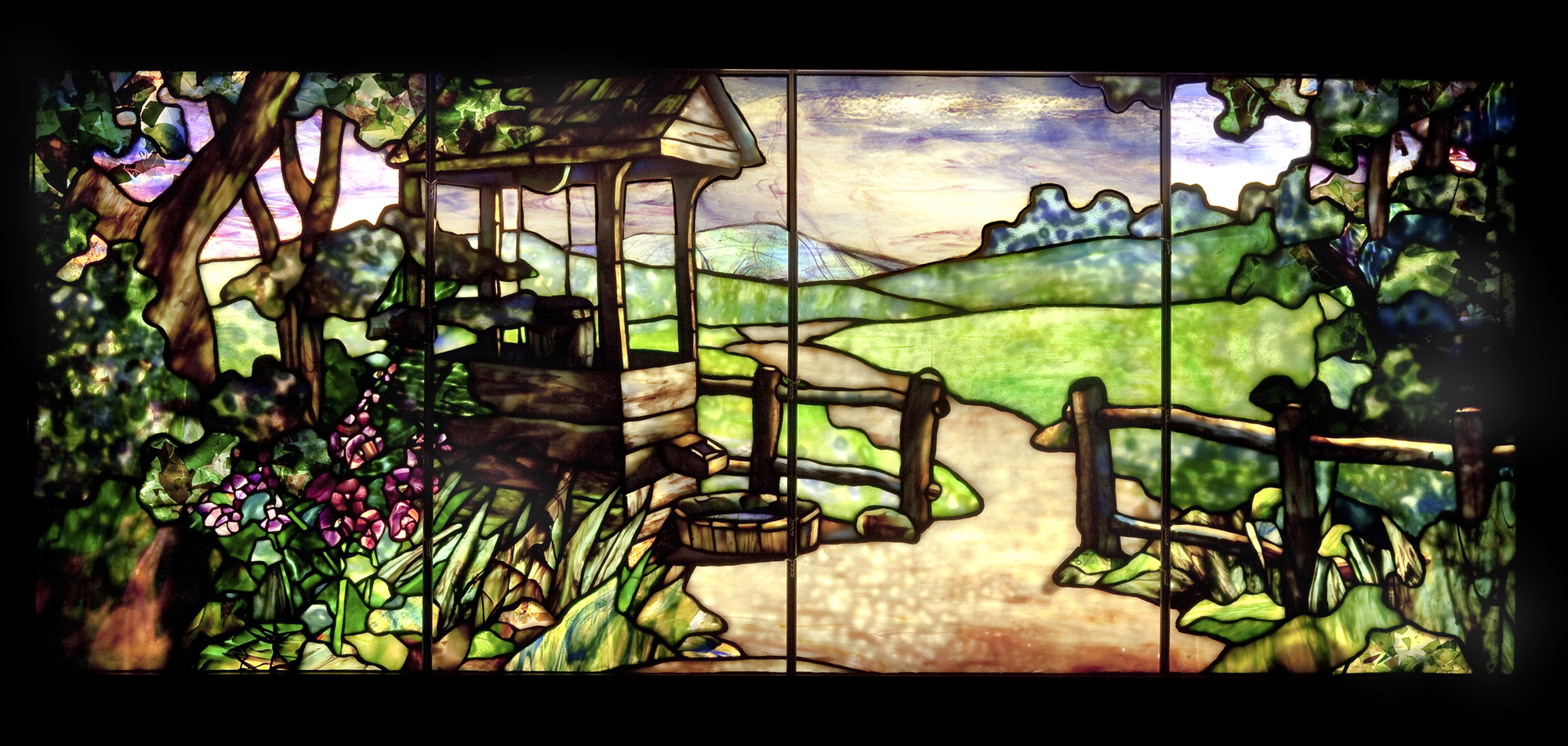
WILMINGTON, Del. – Winterthur is hosting “Tiffany Glass: Painting with Color and Light,” a major exhibition organized by the Neustadt Collection of Tiffany Glass in New York featuring some of Louis Comfort Tiffany’s (1848–1933) most iconic works, and “Tiffany: The Color of Luxury,” the Winterthur-curated companion exhibition exploring the Tiffany name in American culture. The exhibitions open Sept. 5 and run through Jan. 3.
“Tiffany Glass: Painting with Color and Light” will include celebrated windows such as Grape Vine and Lemon Tree with Trellis and Well by the Fence, among the visually stunning examples of Tiffany’s mastery of “painting” with glass. Lamps and opalescent flat glass from the Tiffany Studios workshop also will be on view.
“Tiffany: The Color of Luxury” will present a fun and engaging look at the Tiffany name in American culture including the du Pont household, from the iconic colors to the relationship between the retailer Tiffany & Co., and the artisanal Tiffany Studios. Tiffany objects featured in this jewel-box of a show include a six-prong diamond engagement ring, sterling tableware, pieces of silver holloware from Tiffany & Co., a painting by Louis Comfort Tiffany, and whimsical objects such as silver toothpaste-tube turners and telephone dialers.
As a painter, Louis C. Tiffany was captivated by the interplay of light and color, and this fascination found its most spectacular expression in his glass “paintings.” Through the medium of opalescent glass, Tiffany could actually capture light in color and manipulate it to achieve impressionistic effects. Using new and innovative techniques and materials, Tiffany Studios created leaded-glass windows and lampshades in vibrant colors and richly varied patterns, textures and opacities.
“Tiffany Glass: Painting with Color and Light” is composed of five windows, 20 lamps, and 75 pieces of opalescent flat glass, in addition to educational models illustrating how leaded-glass shades are selected and fabricated, along with three examples of Tiffany lamp forgeries to explore issues of authenticity and connoisseurship.
The objects on display are some of the most iconic and celebrated of Tiffany’s works. Chosen for their masterful rendering of nature in flowers or landscape scenes and for the subtle use of light and shading in decorative geometric patterns, they exemplify the rich and varied glass palette, sensitive color selection and intricacy of design that was characteristic of Tiffany’s leaded-glass objects.
This exhibition also highlights some of the key figures at the Tiffany Studios who made essential contributions to the artistry of the windows and lamps—chemist Arthur J. Nash and leading designers Agnes Northrop and Clara Driscoll.
Dr. Egon Neustadt, the founder of the Neustadt Collection, began acquiring Tiffany lamps in 1935. He went on to amass an almost encyclopedic collection, but perhaps his most significant acquisition came in 1967 when he purchased the flat and pressed glass leftover from the closing of the Tiffany Studios in the late 1930s. This collection contains some 275,000 pieces of glass and is the only holding of its kind. With both materials and objects, the Neustadt Collection of Tiffany Glass is uniquely positioned to fully explore Louis C. Tiffany’s legacy of painting with color and light.

